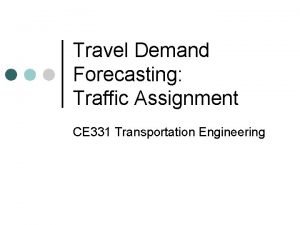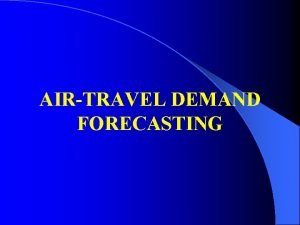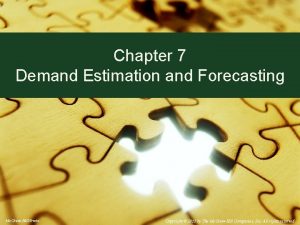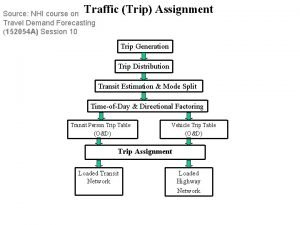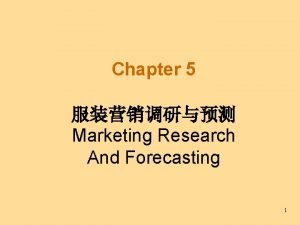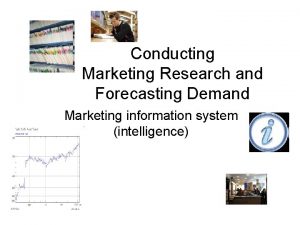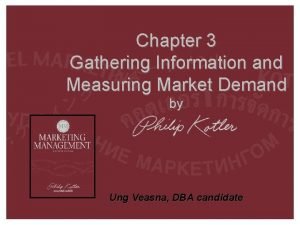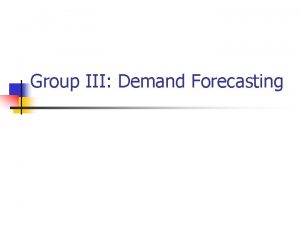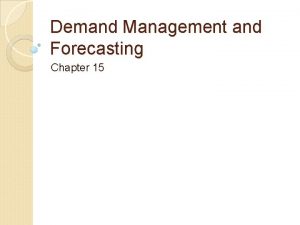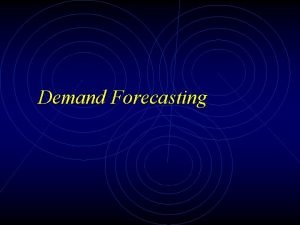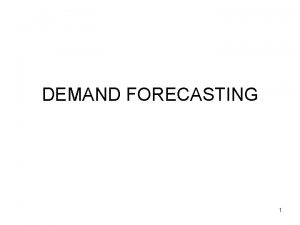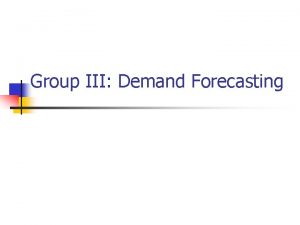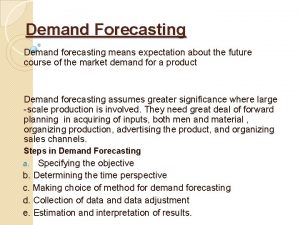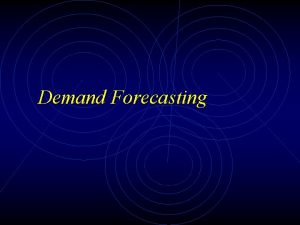Travel Demand Traffic Forecasting Dr Attaullah Shah Travel














- Slides: 14

Travel Demand Traffic Forecasting Dr. Attaullah Shah

Travel Demand & Traffic Forecasting �Necessary understand the where to invest in new facilities and what type of facilities to invest �Two interrelated elements need to be considered �Overall regional traffic growth/decline �Potential traffic diversions

Traveler Decisions �Four key traveler decisions need to be studied and modeled: �Temporal decisions – the decision to travel and when to travel �Destination decisions – where to travel (shopping centers, medical centers, etc. ) �Modal decisions – how to travel (auto, transit, walking, biking, etc) �Route decisions – which route to travel (I-66 or Rt 50? )



Trip Generation �Objective of this step is to develop a model which can predict when a trip will be made �Typical input information �Aggregate decision making units – we study households not individual travelers typically �Segment trips by type – three types 1) work trips 2) shopping trips and 3) social/recreational trips �Aggregate temporal decisions – trips per hour or per day


Trip Generation Model �Typically assume linear form �Typical variables which influence number of trips are �Household income �Household size �Number of non-working household members �Employment rates in the neighborhood �Etc.

Typical Trip Generation Model

Trip Generation Model Example Problem Number of peak hour vehicle-based shopping trips per household = 0. 12 + 0. 09 (household size) + 0. 011(annual household income in $1, 000 s) – 0. 15 (employment in the household’s neighborhood in 100 s) A household with 6 members; annual income of $50 k; current neighborhood has 450 retail employees; new neighborhood has 150 retail employees.

Trip Generation with Count Data Models �Linear regression models can produce fractions of trips which are not realistic �Poisson regression can be used to estimate trip generation for a given trip type to address this problem

Poisson Regression Model

Estimating Poisson Parameter

Example 8. 4 Given: BZi= -0. 35 + 0. 03 (household size) + (0. 004) annual household income in 1, 000 s – 0. 10 (employment in household’s neighborhood in 100 s) Household has 6 members; income of $50 k; lives in neighborhood with 150 retail employment; what is expected no of peak hour shopping trips? What is prob household will not make peak hour shopping trip?
 What is demand estimation
What is demand estimation Dr attaullah tutorial
Dr attaullah tutorial Travel demand forecasting
Travel demand forecasting Air travel demand forecasting
Air travel demand forecasting Incomina
Incomina All traffic solutions traffic cloud
All traffic solutions traffic cloud Demand estimation and forecasting
Demand estimation and forecasting Source nhi
Source nhi Forecasting and demand measurement in marketing
Forecasting and demand measurement in marketing Collecting information and forecasting demand summary
Collecting information and forecasting demand summary Gathering information and measuring market demand
Gathering information and measuring market demand Measuring market demand
Measuring market demand Demand forecasting objectives
Demand forecasting objectives Chain ratio method examples
Chain ratio method examples Demand forecasting objectives
Demand forecasting objectives


